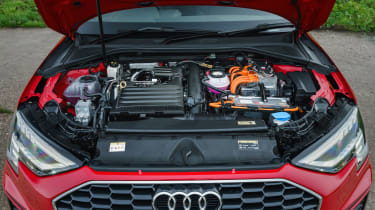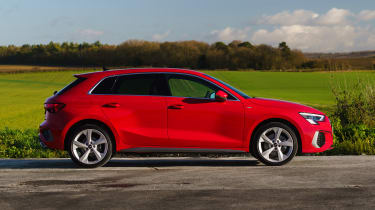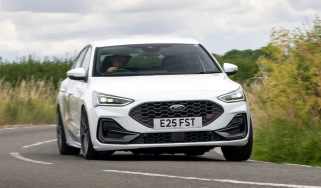Audi A3 – engine, gearbox and technical highlights
The A3 range features unstressed petrol, diesel and plug-in powertrains. Transmissions are of the usual manual or dual-clutch variety
Fundamental to the Audi A3, and its platform mates the Golf, Leon and Octavia, are the shared powertrains that are found right across the Volkswagen Group’s extensive range of MQB models. This means that while the engines might all be the same (and trust us, they are) due to a high investment in fundamental engineering, they’re good.
The A3's engine range has expanded since its launch, and consists of a 1.5-litre turbocharged four-cylinder ‘evo’ engine and an entry-level 1-litre turbo triple petrol, plus a diesel. The ‘evo’ petrol engine is excellent when considered objectively – superbly refined, responsive, torquey at low rpm, but not so much as to strain at the upper reaches of the rev range. The three-cylinder has little place in a premium-branded car like the A3, it makes what is already a car at odds with the four-rings on the steering wheel feel like a hire-car. For 2024, there's now just a single 148bhp diesel engine on offer.
Building on the pure combustion options are two plug-in hybrid options, both pairing a 1.4-litre turbocharged four-cylinder petrol engine with an electric motor and a 13kWh battery pack. The two offer 200bhp and 242bhp, respectively, with hardware shared between the Skoda Octavia iV, VW Golf GTE and Cupra Leon. Total electric range for the both of them is rated at around 48 miles on the WLTP cycle.
There are two transmission options – a six-speed manual and seven-speed S-tronic dual-clutch. The S-tronic is nothing unusual, unobtrusive shifts, responsive paddles and a nice interplay between engine and transmission. It does hesitate at low speeds like all-dual clutch boxes, but isn’t nearly as sloppy as some of Volkswagen’s high-rated boxes that prioritise clutch life over response.
The manual is a different matter though, as despite sharing almost everything with the gearboxes in the rival Leon and Golf, it feels less precise than in either of those cars. Whether this was something to do with the specific car we were driving, or perhaps Audi’s decision to divert some of the development resource to the more popular S-tronic option is unknown, but the result is the A3 actually feels the least resolved of its immediate brethren. Quattro models are also curiously absent save for the more potent S3 and RS3 models.





